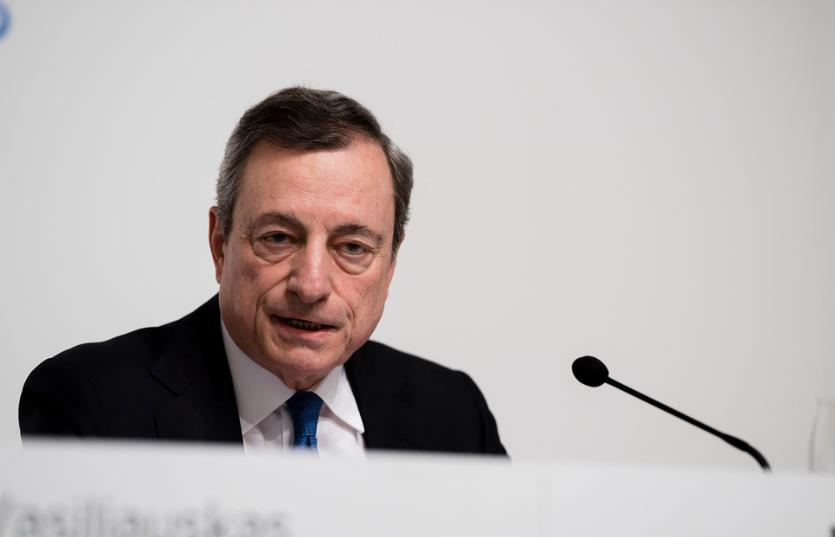European Central Bank President Christine Lagarde said that a rate cut in the summer is “likely” as the central bank seeks to boost inflation and support the economic recovery. Lagarde, who spoke at the Bloomberg House in Davos, dismissed market expectations of earlier rate cuts as a “distraction” and said that the ECB needs to see more evidence of wage growth and price pressures before acting. She also warned that excessive easing bets could undermine the credibility of the ECB’s 2% inflation target by loosening financial conditions too much.
Lagarde’s comments echoed those of other ECB officials who have recently expressed openness to lowering borrowing costs in June, when they will have more information on the economic outlook, the impact of the Yemen crisis on oil prices, and the results of wage negotiations. The ECB last cut its deposit rate, which is currently at -0.5%, in September 2019.

Markets Adjust to ECB Guidance
Markets reacted to Lagarde’s remarks by scaling back their rate-cut expectations for the first half of the year. Money markets now price in a 80% chance of a 25-basis-point cut in April, down from 100% a week ago. They also anticipate five quarter-point reductions in 2024, instead of six. The euro strengthened slightly against the dollar, while European bond yields rose.
Some analysts said that Lagarde’s statements were a clear signal of the ECB’s intentions, while others cautioned that the central bank could still change its mind depending on the data and the geopolitical situation. “The statements came as a bit of a surprise — when the ECB president says something like that, it’s like a pre-commitment,” said Carsten Brzeski, global head of macro at ING. “After the statements, a rate cut in June seems very likely.” Denis Lehman, securities chief investment officer at Swiss Life Asset Managers France, said that “the correction will come, and sooner rather than later.”
ECB Faces Challenges to Boost Inflation
The ECB has been struggling to lift inflation in the euro area, which has been below its target for most of the past decade. In December, annual inflation was 1.6%, down from 2.2% in November, mainly due to lower energy prices. Core inflation, which excludes volatile items such as food and energy, was 1.4%, unchanged from the previous month.
The ECB has deployed a range of stimulus measures to support the economy and inflation, including negative interest rates, asset purchases, cheap loans to banks, and forward guidance. In July 2023, it also revised its monetary policy strategy and adopted a symmetric 2% inflation target, meaning that it will tolerate temporary deviations above or below that level.
However, the central bank faces several headwinds, such as weak demand, supply chain disruptions, labor market slack, and low inflation expectations. It also has to contend with the uncertainty caused by the Covid-19 pandemic, the political tensions between Russia and Ukraine, and the Yemen crisis, which has disrupted oil supplies and pushed up prices.
ECB Awaits Wage Developments
One of the key factors that the ECB will monitor before deciding on a rate cut is the outcome of wage negotiations in several euro area countries, which could have a significant impact on inflation. The ECB expects wage growth to pick up in 2024, as the labor market recovers and skill shortages emerge in some sectors. However, the pace and extent of wage increases may vary across countries and industries, depending on the bargaining power of workers and employers, the degree of labor market slack, and the productivity trends.
Some ECB officials have argued that the central bank should wait until the wage data are available before acting, as they could provide a clearer signal of underlying inflation pressures. Others have suggested that the ECB should not delay its stimulus, as wage growth may not translate into higher inflation if firms absorb the higher costs or pass them on to consumers who are reluctant to spend.
ECB Diverges from Other Central Banks
The ECB’s stance contrasts with that of other major central banks, which have either started or signaled the start of monetary policy tightening in response to higher inflation and stronger growth. The US Federal Reserve raised its benchmark interest rate by 25 basis points in December, the first increase since 2018, and indicated that it could hike three more times in 2024. The Bank of England is widely expected to raise its key rate in February, after surprising markets by keeping it unchanged in December. The Bank of Canada also lifted its policy rate in January, while the Reserve Bank of Australia and the Reserve Bank of New Zealand have already done so in 2023.
The divergence reflects the different economic situations and inflation dynamics in each region, as well as the different policy frameworks and objectives of each central bank. The ECB has emphasized that it will not react mechanically to temporary inflation shocks, but will focus on the medium-term outlook and the sustainability of inflation at its target. It has also stressed that it will maintain a high degree of monetary policy accommodation for as long as necessary, and that it will use all its instruments in a flexible and proportionate manner.
